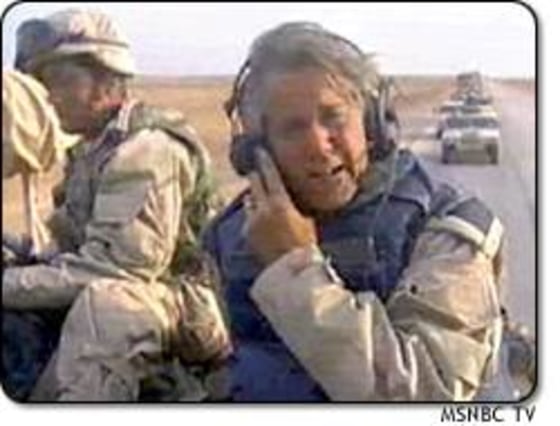Commanders of the U.S. 3rd Infantry Division were rapidly changing their battle plans Thursday after opposition from the Republican Guard failed to materialize and they unexpectedly found themselves on the outskirts of Baghdad ahead of schedule.
Late Thursday, some units attacked Saddam International Airport on the southwest edge of the Iraqi capital.
But U.S. commanders said any move to assault Baghdad would be a “political” decision made by higher-ranking officers.
Originally, the 3rd Infantry was supposed to race to the west of Karbala on Thursday, cross the Euphrates River and swing south to launch a surprise attack on the rear of the Republican Guard 40 to 50 miles south of Baghdad. But the combination of several days of heavy air attacks by Apache helicopters and A-10 Warthog warplanes, plus constant pounding by the 3rd Infantry Division’s 155 mm artillery, left the Guard units with only 20 percent of their original fighting capacity.
More than one 3rd Infantry soldier said they’d never begrudge the U.S. Air Force again after that performance. An assault by the 3rd Infantry would have been much more deadly, with one-on-one tank battles.
The 3rd Infantry commanders decided the remnants of the Iraqi forces could be mopped up by other U.S. troops, and instead swung the division north toward Baghdad, slowing down when they were about 10 miles from the city’s center.
Efforts to soften up the Iraqi defenses began almost immediately. At one point, the sky lighted up around our positions as troops from three batteries fired multiple-launch rocket systems, 30 to 40 rockets in all, at Iraqi positions closer to Baghdad.
While the 3rd Infantry’s primary target was the heavily armored Republican Guard divisions, it spent January and February training in urban combat as well. Each of the infantry’s Bradley fighting vehicles carries eight or nine soldiers, so they can go into the city with their tanks and Bradleys and fight building by building.
A DIFFERENT SORT OF COMBAT
That would be very different from the combat they’ve faced thus far. They’ve met very limited resistance on the way up from Kuwait, all the way through the Karbala Gap, west of the city. We’ve seen very gruesome scenes along the way of Iraqi fighters who were destroyed by coalition tanks, Bradleys and air power. The 3rd Infantry’s attackers have been guerilla-type fighters — on Thursday, we saw motorcycles that had machine guns mounted on them — who are little more than a nuisance for a force like this.
For the U.S. forces to be on the outskirts of Baghdad in two weeks, is a very fast pace, but they have been fortunate in that they have encountered no chemical attacks, no large-scale loss of life and only light resistance from the Republican Guard.
But as remnants of the Republican Guard, Saddam’s Special Republican Guard and the Iraqi intelligence forces have pulled back inside Baghdad, it may very well be that the most dangerous battle is ahead.
(NBC News correspondent David Bloom is traveling with the U.S. 3rd Infantry Division.)
